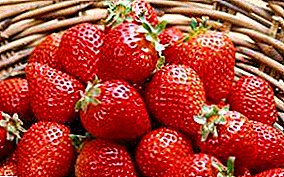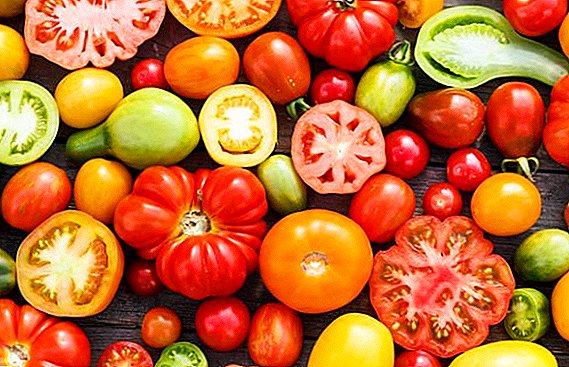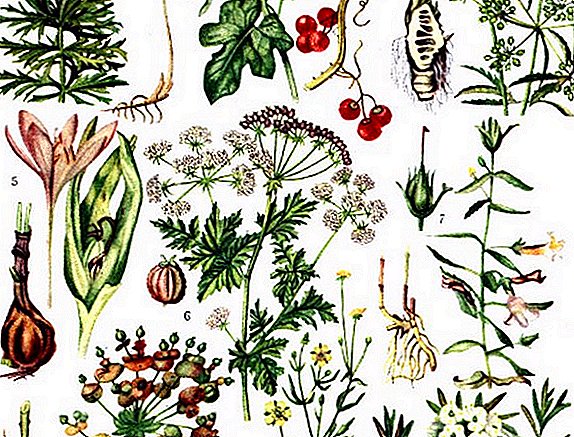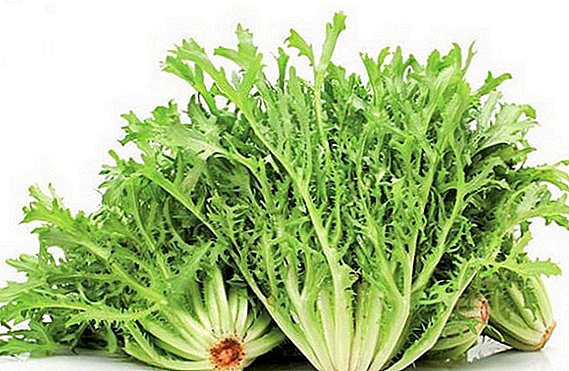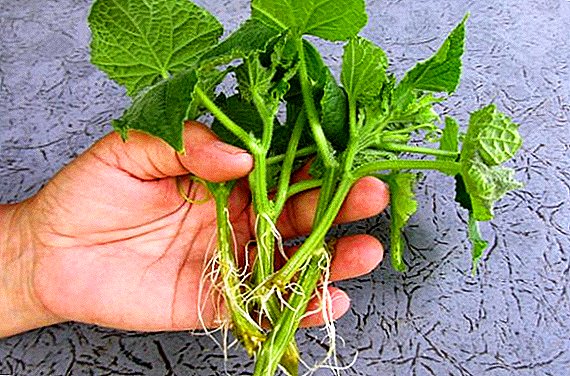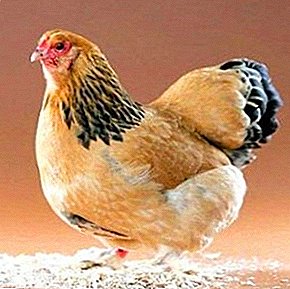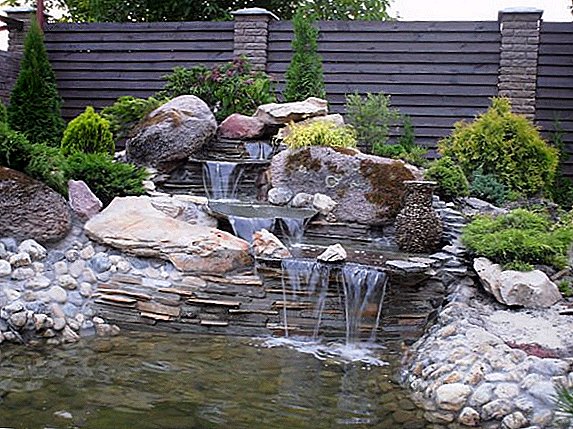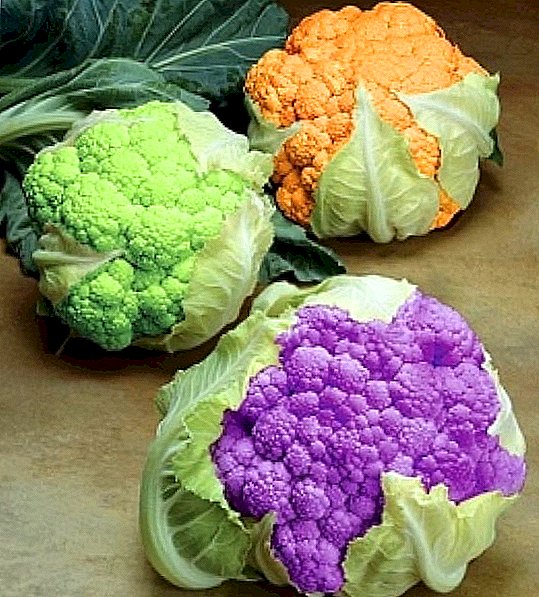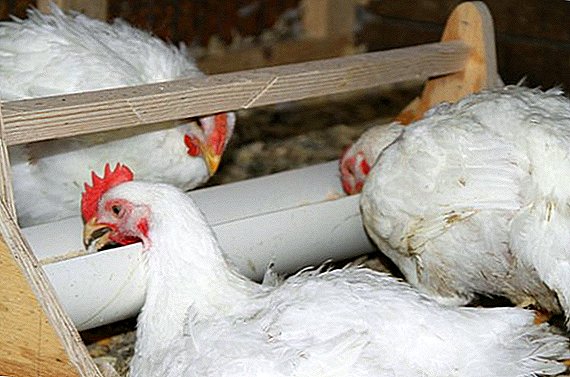 Many large and small farms breed broilers. These birds grow very quickly, they are profitable to grow, but at the same time the cost of their maintenance is quite high, as the feed and equipment for feeding the road. Let's look at how you can quickly and inexpensively build a broiler feeder with your own hands. What are the types of feeders, as well as what designs allow rational use of feed and thereby save money.
Many large and small farms breed broilers. These birds grow very quickly, they are profitable to grow, but at the same time the cost of their maintenance is quite high, as the feed and equipment for feeding the road. Let's look at how you can quickly and inexpensively build a broiler feeder with your own hands. What are the types of feeders, as well as what designs allow rational use of feed and thereby save money.
Basic requirements for feeders
Feeders must comply with the following rules:
- Rational feeding approach - feed dispensers must have a device that excludes the possibility of birds entering into them (spinners, dividing rims). Only the bird's head can easily penetrate the feeder. If the device is more open and the birds can climb inside, the food will be raked up by paws and clogged with bird droppings.
- Simplicity and availability in operation and care - the feed dispenser is used daily, it should be convenient for pouring, cleaning and periodic washing. Moreover, both the convenience of the design of the feeder and the quality of the materials from which it is made is welcomed. The optimal trough weighs little, it is easy to move it from place to place, it is easily washed with water, does not change its physical and chemical properties after the use of disinfectants.
- Suitable size - both the size and the capacity of the feeder are selected so that the entire flock of birds will be enough for the whole daylight. For adult broilers, 100-150 mm are needed for each bird, and 50-70 mm for one chicken is enough for chickens. If the feeder is disc-shaped, then 25 mm is enough for feeding each adult chicken (so that only the beak penetrates). With the correct calculation of the number and length of the feeders, all birds (strong or weak) can be simultaneously saturated.
 The material from which the manger is made depends on its purpose:
The material from which the manger is made depends on its purpose:- A wooden feeder is useful for feeding chicken flocks with dry feeds (compound feed and grain) and feeding mineral supplements (with chalk, shell rock, small pebbles).
- Mixers from succulent feeds are more conveniently placed in plastic or metal feeders, since such feed dispensers need to be washed daily.
- Finely chopped green fodder is fed to hens from feeders with a grid cover, in the form of a grid can be a safety cover made of metal mesh or welded from thin steel wire.
We advise you to read about how to make an automatic feeder for chickens.
Types of feeders:
- Tray - shallow tank with raised small sides, in which feed is poured. Feed trays are used for young birds.
- Gutter Feeder - can be divided into sectors, each of which has its own kind of food.
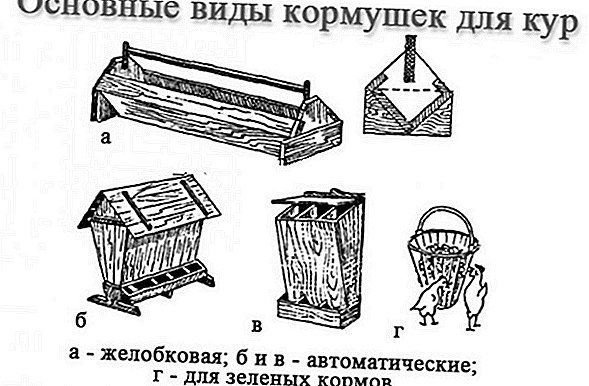 The upper part of such feeders is often covered with a frequent metal grill, to save the contents from raking chicken legs. Usually, the trough feeders are installed outside the broiler cage, but so that the birds can easily peck the food.
The upper part of such feeders is often covered with a frequent metal grill, to save the contents from raking chicken legs. Usually, the trough feeders are installed outside the broiler cage, but so that the birds can easily peck the food. - Bunker Feeder - used for batch delivery of dry feed. This device allows the farmer to not be present on the chicken farm for one to three days. The required amount of feed (grain or feed) is poured into the central part of the bunker feeder. Through the pipe connecting the bunker and the feeding tray, dry food enters the lower part of the feeder. As the birds eat the food in the lower tray from the bunker in small batches comes a new feed. The device allows you to keep food dry and clean.
Did you know? A hen hen can put another's egg in the nest, which the mother will accept and sit out without objections. And the hatched duckling or goose will lead along with his chickens, without isolating him from the brood.

Feeding trough for broilers do-it-yourself
The designs of poultry feeders are of various shapes and sizes. Some designs are round or tubular, covered with gratings or made in the form of a bunker, and also elongated, mounted horizontally on the ground or suspended vertically.
We recommend to read about how to make a drinker for chickens at home.
Different models can be made of plastic, metal, wood, glass and other materials. Round, tubular feeders function perfectly when birds are fed with pelleted or loose food, as the feed will constantly enter the tray until the broilers eat.
Did you know? Chickens may carry two yolk eggs, but these eggs will never hatch twin chickens. Usually, two yolk eggs do not contain a single embryo.
Many farmers feed broiler mixers from mixed fodder and succulent ingredients (beets, carrots, nettles, kitchen waste).  Such nutrition has shown itself to be much more efficient than feeding only dry food. For such feed intended trough with a sealed bottom.
Such nutrition has shown itself to be much more efficient than feeding only dry food. For such feed intended trough with a sealed bottom.
It will be interesting to read about how to build a chicken coop, how to equip it, as well as how to make ventilation, heating and lighting in it.
In the form of a tray
Wooden portable tray for chicken feed
Necessary materials:
- Smooth wooden board 10-15 cm wide and one meter long for the bottom of the box. A feeder of such length is perfect for a dozen broilers.
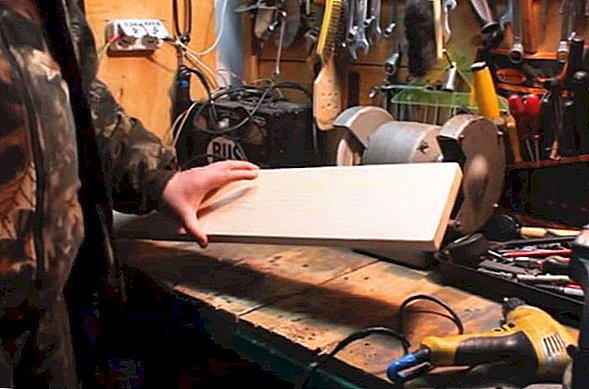
- Two narrow, smooth and long wooden boards for the longitudinal sides of the box (width up to 5 cm, the length is the same as that of the board for the bottom).
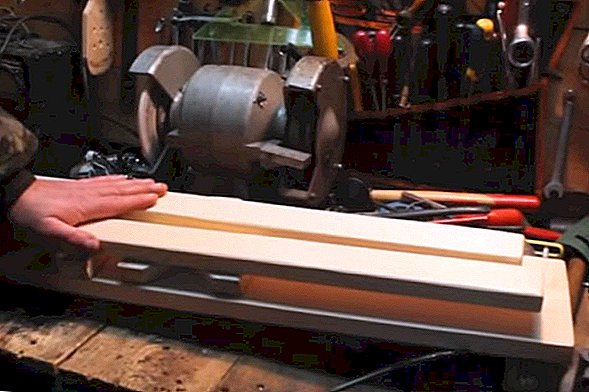
- Two small wooden pieces for the transverse sides of the box. The height of the transverse sides should be at least 15-20 cm, and the width should be equal to the width of the bottom of the feeder.
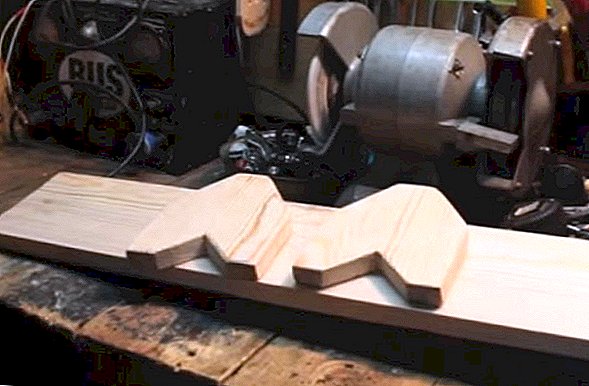
- A narrow planed board 3-4 cm wide and a length equal to the length of the future box. This part will be used to manufacture the handle needed to move the structure from place to place. Also, the longitudinal handle prevents chickens from getting into the feeder "with legs".
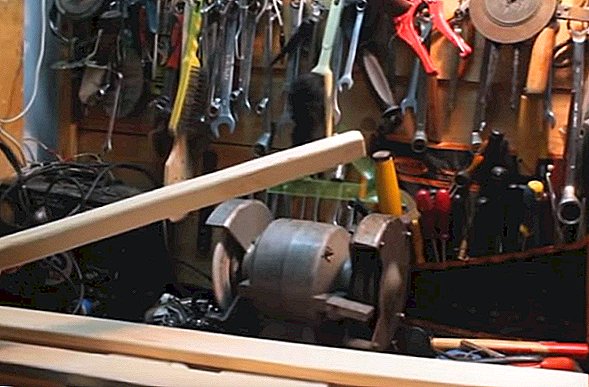
- Metal nails or medium-sized screws (20-30 pieces).
- Sandpaper (20 cm).
Did you know? Avian flu is extremely contagious, infected chickens are very difficult to tolerate it and may eventually die. The pathogenic form of the disease can kill from 90 to 100% of the birds in a chicken herd in just 48 hours.

Tools for work:
- simple pencil;
- meter ruler;
- hammer;
- plane;
- hand saw.
Check out the best broiler breeds.
Step by step instructions for making:
- The boards selected for work are treated with a carpenter planer to a smooth condition.
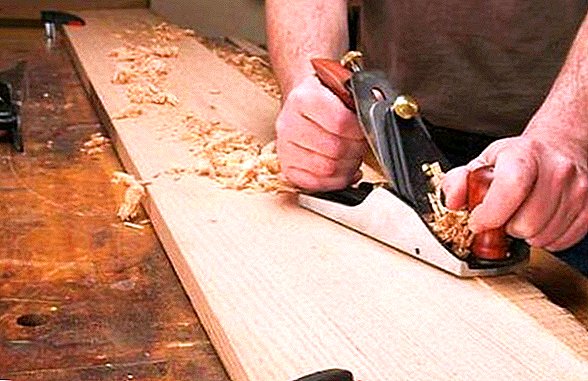
- With the help of a pencil and a ruler, markup and drawing all the details on the tree are made. Production of preliminary patterns from cardboard in this case is not necessary, since the work does not require a large level of accuracy.
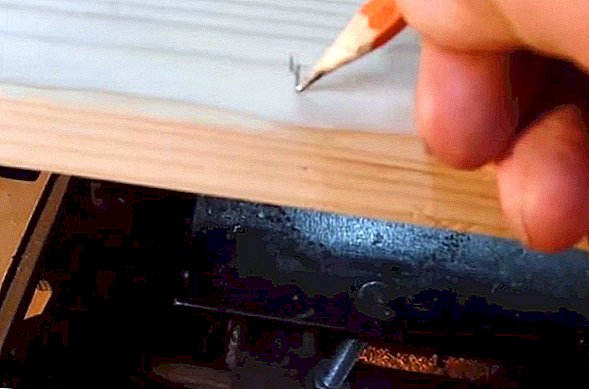
- The drawn parts are cut using a hand saw. On paired parts (sides) put numbers 1 and 2 in pencil, which in the future will facilitate the assembly of structures.
- End caps are attached to the bottom with nails or screws. This is done so that both the left and right side extend 2 cm below the bottom. These protrusions from the bottom form the “legs” of the structure.
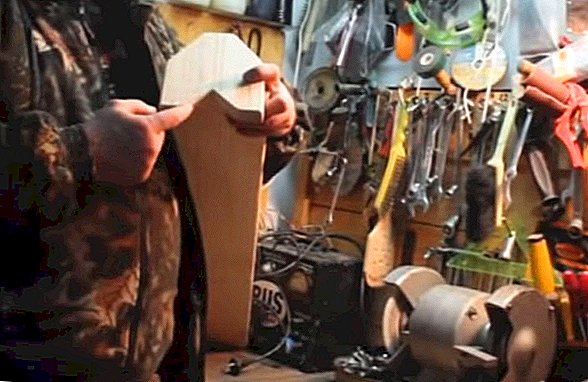
- To the side wall of the bottom nail or screw the left, and then the right longitudinal rim of the feeder. These sides should not protrude below the bottom of the structure.
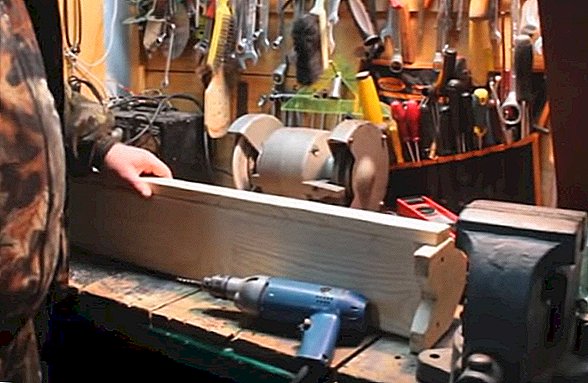
- The resulting low and shallow trough thoroughly polished with emery paper.

- Also sandpaper treated from burrs board, designed for the manufacture of handles.
- The handle of the feeder is placed along the structure, laid on the transverse sides and firmly fixed with nails or screws.
- The feeder tray is ready to be filled with dry food.
Important! In the case when it is supposed to use a wooden feeder for feeding broilers with wet food (mash), water is poured into the construction and left until the tree swells for 5-7 days. The swollen tree will hide all gaps between the compounds, and liquid feed will not flow out.
In the form of a gutter
The craftsmen create quite convenient and cheap feed dispensers for broilers in the form of gutters made of PVC pipes. These feed gutters are hung by rope or wire fasteners to the ceiling of the chicken coop. The height of the feeder above the floor is not higher than the height of the body of a broiler. For young birds, the groove falls lower, as the hens grow, the feeder attachments are tightened higher.
We recommend reading about how to make a feeder for wild birds, rabbits and piglets.
Necessary materials:
- Smooth PVC pipe of the desired length. For every 10 heads of chicken herd provides at least one meter trough.
- Two wooden dies with a thickness of 1.5-2 cm to create the side walls of the groove.
- Two pieces of a long, elastic wire or two pieces of a strong rope for fastening a chute to the ceiling. The length of each segment of the future attachment is calculated as follows: the distance from the floor to the ceiling of the chicken coop is measured and multiplied by two.

Tools for work:
- carpenter's folding meter for measurements;
- simple pencil and chalk for marking parts;
- saw "Bulgarian" manual jigsaw;
- hammer;
- two steel nails "weave".
We advise you to familiarize yourself with recommendations on feeding broilers.
Step-by-step instruction:
- The PVC pipe is laid on the floor, the necessary length is measured on it with the help of a carpentry meter and chalked out.
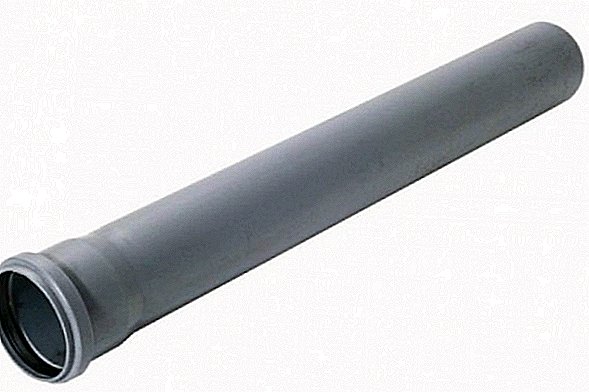
- Using the "grinder" cut off from the pipe excess length. After that, using the same tool, the pipe is cut in half lengthwise, it turns out a groove with open ends.

- Using a pencil, mark the details of the end caps on wooden dies. Cut them with the help of a manual jigsaw, then insert them in the end of a PVC groove.
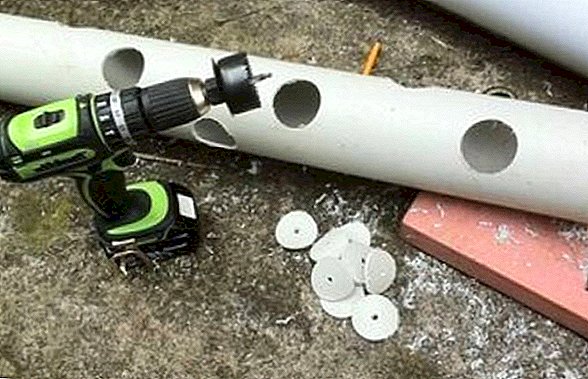
- Two nails "weave" are hammered with a hammer into the ceiling or upper part of the side wall. Their distance from each other should be 40 cm shorter than the length of the feeding channel.
- Two pre-prepared pieces of rope (wire) are taken and each is tied into a ring. The knot does not need to be tightened tightly, since the rope loop will later be adjusted to the desired length. Each of the resulting rope rings is hung on its own ceiling nail.
- Inside the rope loops hanging on nails there is a long PVC trough. A "swing" is obtained almost at the very floor of the chicken coop.
- The final stage of the construction of the feeding gutter is height adjustment. To reach the desired height, the knot of the rope ring is untied, and the rope is tightened slightly up or down, after which the knot is tied again, firmly this time. The most optimal height for hanging such a feeder is at the level of a chicken breast or neck.
- If desired, such a feeder can be divided into sectors using wooden partitions, made in the form of a trough (semi-circular).

- Also, the longitudinal hole for the feed can be covered with a metal grid with large cells. This will help keep food clean and protect it from being showered with chicken paws. To do this, cut the desired piece of metal mesh (the length corresponds to the length of the groove, the width of its circumference). The hanging groove is wrapped in a net (edges down) and secured at the bottom of the structure with rope segments (they simply tie the net together).
- It is easy to remove the feed chute for cleaning or rinsing - just remove it from the hinges.
Video: feeder and drinking bowl for poultry from sanitary pipe
Bunker Feeder
Bunker feeders, there are many varieties, they are factory and homemade. Poultry farmers have long appreciated bunker designs for their economy, rational distribution of feed, and convenience. Consider two types of easy-to-make homemade bunker feeders.
Read more about how to roost, nest, cage and aviary for poultry.
PVC pipes
This is the bunker version of the feeder, which allows birds to constantly receive food until it ends in the bunker. This design can also be hung from the ceiling of the chicken coop so that it is less polluted. The highlight of this model is the curved tube, which makes it difficult for broilers to scatter feed.
This design is easy to assemble and not expensive at all. It is based on PVC pipes, which can be purchased at any plumbing store.  The length and diameter of the future design can be varied, since there are various versions of pipes available. The diameter of the pipe is selected depending on the age of the bird.
The length and diameter of the future design can be varied, since there are various versions of pipes available. The diameter of the pipe is selected depending on the age of the bird.
Did you know? The rooster is the only bird among the numerous beasts of the Chinese zodiac signs.
Necessary materials:
- Sewer flat PVC pipes: take a length equal to the length from floor to ceiling of the chicken coop minus 30 cm. The diameter of the feeder pipe for chickens and young birds is 60-70 mm, the diameter of the feeding pipe for adult broilers is at least 110 mm.
- PVC pipe, made in the form of a tee.
- Tools for work:
- Saw "Bulgarian" or manual jigsaw.
- A simple pencil or chalk to mark the line of cuts.
- Carpenter folding meter.
- Wire for the manufacture of hinges to the ceiling or side fasteners for the pipe.

Step-by-step instruction:
- With the help of a carpenter's meter, the distance from the ceiling to the floor of the chicken coop is measured. From the result, 30 cm is taken away. This will be the height of the future bunker for dry fodder.
- PVC pipes are laid on a horizontal surface and using the carpentry meter and chalk mark the desired length.
- With the help of a manual jigsaw or saw "grinder" (exactly following the markup), cut off part of the PVC pipe. Only one end of the pipe is cut off; at the second end, a factory thread must be present to connect various parts of the structure.
- At the top of the pipe (20 cm below the cut), two holes are burned with a thick weave, which is heated on an open fire. The prepared piece of strong thick wire is threaded into these holes and secured in the form of a loop. For this loop, the structure will be hung from a hook under the ceiling (on the side wall or in the middle of the room). If desired, you can vertically strengthen the bunker feeder on the wall of the chicken coop with the help of three or four side mounts.
- Cut a piece of vertical pipe set cut up and threaded to the floor and connected to the tee of PVC pipes.
- The assembled structure is lifted and suspended by the wire loop to the hook. The feeder in a suspended form does not reach the floor about 20 centimeters. The bunker is filled with grain or dry feed through the top opening (under the ceiling). Feed wakes up the vertical tube down and lingers in the slightly bent tee tubes. As soon as the chickens eat out some food, it replenishes immediately, getting enough sleep from the vertical pipe, under the total weight of the feed, so that while the bunker is filled with grain, the amount of food at the bottom of the feeder does not decrease.
Did you know? In the XYI-XYII centuries in the countryside, the peasants determined the time not by the hours that they rarely had in the villages, but by the movement of the sun and cocky singing.
From a three-liter plastic bottle
Another popular and easy to manufacture version of the bunker trough.
Necessary materials:
- empty three-liter plastic bottle from drinking water;
- suitable diameter cover to cover the feeder.
Tools for work:
- sharp wallpaper knife;
- thick working gloves to protect your hands.

Step by step instructions for making:
- The bottle from under the water is well dried, after which with a sharp knife carefully cut into two approximately equal parts.
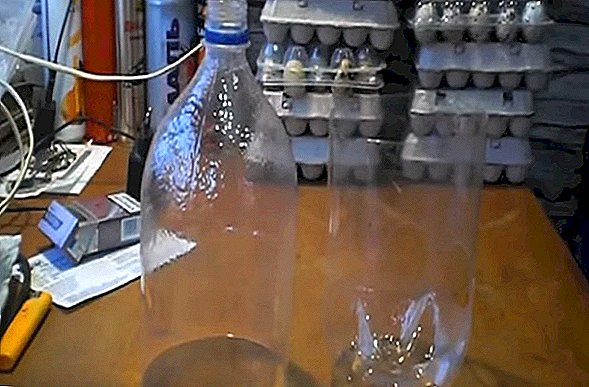
- In the side walls of the cut-off bottom of the bottle at a height of 5-6 cm, holes with a diameter of 5-7 cm are cut. The diameter of the holes should correspond to the diameter of the broiler's head. These holes are located across the side wall 5 cm apart.
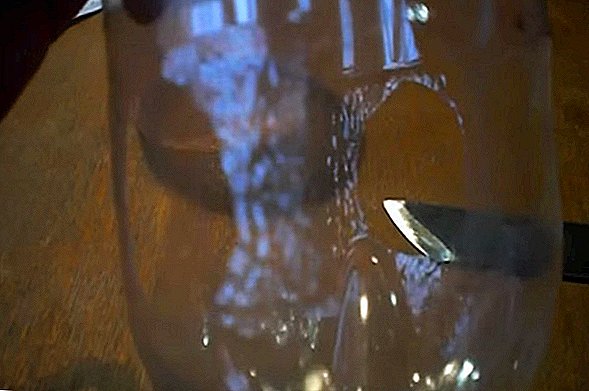
- The upper part of the bottle is turned down the neck (after removing the cork), and placed in the lower part of the bottle so that the neck does not reach the bottom of about 3 cm. This space will be sufficient for normal filling of the feeder with food. If the neck of the bottle still reaches the bottom, with the help of a knife, the bottom of the bottle is slightly trimmed, into which the upper part is inserted. The fitting is done until it is possible to achieve a firm fastening of the upper part of the bottle in the desired position.

- The feed dispenser is almost ready, it remains to fall asleep through the upper open cut of the bottle of grain or feed and cover the bunker feeder with a lid on top, it will help to protect the feed from rain. As the lid fits a plastic bowl of the desired diameter.
Video: manufacturing process of bunker feeders for chickens
Where better to place
Кормушку устанавливают так, чтобы доступным оставалось только отверстие для головы и клюва птицы. Невозможность для птицы переворачивать ёмкость с зерном, разгребать корма лапами, воспрепятствует созданию в курятнике беспорядка и хаоса.
Learn how to cook feed for chickens and for adult birds with their own hands, as well as how to give chickens bran and meat and bone meal.
The best place for the location of the feed tank is indoors or under a shed. Rain, wind and other weather extremes can quickly destroy a batch of fresh chicken feed. One of the best places to store bird food will be putting a chicken coop closer to the door.
Thus, the food is protected, and chickens have the motivation to return at night to the chicken coop, as well as to visit the boxes with nests to carry eggs. 
Important! Birds have a short intestinal tract, and food is in the body for quite a short time, so chickens are constantly in the process of finding and absorbing food throughout the day. The first sign that chickens do not have enough feed is a decrease in egg production during the warm season. Thus, the birds compensate for the lost feed.
Feeding rules
To fully grow broilers, it is necessary to install one feeder for every 20 broilers and install a drinker for every 15 broilers. These are the minimum requirements. Proper and complete nutrition of young and adult birds should also be provided.
- Until the age of 20 days, broiler chickens are no different from regular chickens. Their diet includes chopped boiled eggs, dry (not boiled) millet, crushed wheat.
- Already on the 4th day, chopped greens (5 g per head) are mixed with the chicks. On the 6th day of life, flour from dried herbs (nettle, dandelion) is added to the mash gradually, 3 g per chicken, and a week later the amount of grass flour per head is doubled.
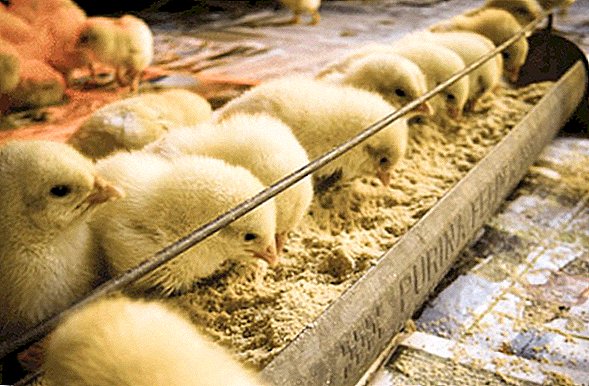
- Extremely useful for broiler chickens red carrots. Starting from the 8th day of her life, it is mandatory to include her in all mixed bird food.
It will be interesting for you to read about how broiler chickens look, what you can give to chickens, how to raise and maintain broiler chickens, how to feed broiler chickens correctly, and how and when to give nettles to chickens.
- Also, broilers are periodically fed with vitamins A and E. They are given to broilers of all ages; birds receive their first vitamin dose from five days of age. Vitamin supplements to feed are needed so that birds do not have rickets.
- In the future, the main diet of broilers consists of feed. In order to fill the need of avian calves for proteins, they are given sour-milk products (whey, cottage cheese, sour milk, reverse) a little every day. After the broilers reach 11 days of age, fish waste can be added to the food (5-6 g per chicken, later on the serving size is adjusted to 15 g).
- On the 21st day of life, significant changes occur in the ration: instead of croup, chickens are given boiled and ground potatoes, but only as a part of mash.
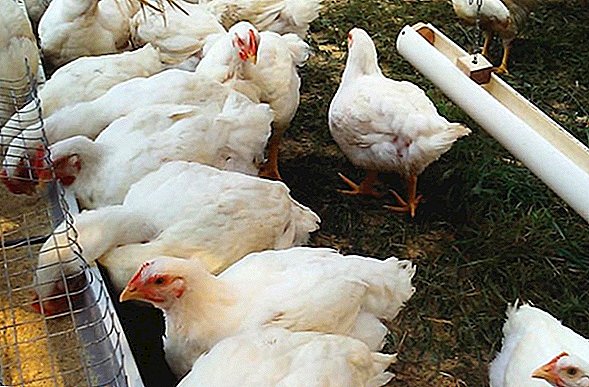
- Broiler food must also include mineral supplements (chalk, bone meal, crushed shells). Starting with the age of one and a half months, a reservoir with river sand is installed in an aviary of matured broilers.
- At the age of one and a half months, a broiler should receive 85 g of food per day. From one and a half to two and a half months, the amount of food per day increases to 100 g. After the birds reach the age of 2.5 months, they should receive at least 115 g of feed in 24 hours.
Find out what should be included in the veterinary first aid kit for broiler chickens, as well as what vitamins to give to broiler chickens.
It’s quite simple to make a feeder for broiler chickens with your own hands. There are many simple, easy to manufacture models. In addition, you can choose the material and size of the structure to your taste. 
Did you know? A distant ancestor of the modern hen is the prehistoric dinosaur, pterodactyl.Self-made feeders are inexpensive, and the lack of costs for factory-made feeders will significantly reduce the cost of raising poultry. Having made a feeding trough according to an individual project, it is possible to achieve optimal feed consumption and provide food to feathered pets in time.
Reviews from the network




 The upper part of such feeders is often covered with a frequent metal grill, to save the contents from raking chicken legs. Usually, the trough feeders are installed outside the broiler cage, but so that the birds can easily peck the food.
The upper part of such feeders is often covered with a frequent metal grill, to save the contents from raking chicken legs. Usually, the trough feeders are installed outside the broiler cage, but so that the birds can easily peck the food.

















